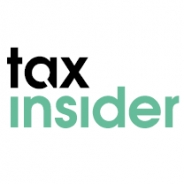
Where a property is owned jointly, the tax treatment depends upon a number of factors not least as to whether the owners are married and whether the property is owned "jointly" or as "tenants in common".
By default, rental profit from property owned jointly by spouses/civil partners is taxed 50:50 irrespective of the underlying proportion of actual ownership. If it would be more tax efficient for a different profit split (e.g. where one owner is taxed at basic rate and the other at higher rates) then the profit may be divided according to that underlying ownership but only if the property is owned as "tenants in common".
HMRC is notified of the amended splitby the submission of Form 17jointly signed together with evidence of the respective beneficial interests (e.g. the signing of a Declaration of Trust). Should one spouse/ civil partner not sign then both must accept the standard 50:50 default split. The form must be submitted within 60 days of the date of signature, cannot be backdated, the time limit being strictly enforced with no power of extension.
Once HMRC has been notified thenthe new split remains in force until the couple's beneficial interests in the property change, or one spouse/civil partner dies or they stop living together as a married couple/ civil partners. Form 17 is only appropriate where two married/civil partners live together.
Where a property is owned by unmarried parties, or held within a partnership business proper, the tax follows the beneficial ownership (i.e. which owner paid the greater deposit, took out the bigger loan for purchase etc) rather than the legal ownership (i.e. the names on the legal documentation including the deeds). This does not mean that the rental profit or loss must be allocated in the same proportion as the underlying beneficial ownership. Rather, in this situation the owners can agree a different split as they see fit, the proportion referring to profits and losses only and not necessarily to the capital received should the property be sold. Form 17 is therefore irrelevant to unmarried owners of joint property however held.
It is suggested that whenever a married couple purchase a second property they do so as "tenants in common" and sign a Declaration. They can then submit a form 17 election even if the 50:50 tax split is to be used because once made the election can be changed easily by just the submitting of a form.
Written by Jennifer Adams for Tax Insider



Please register or log in to add comments.
There are not comments added